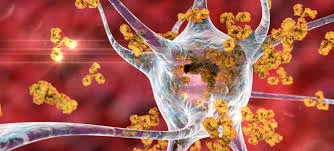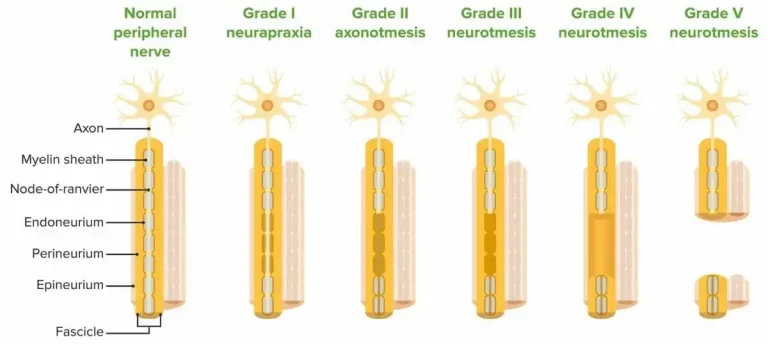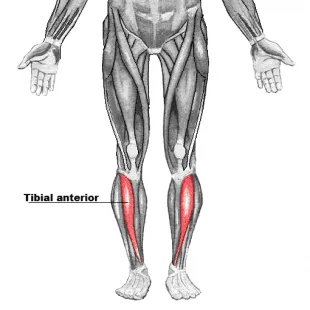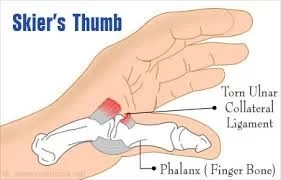Paraneoplastic Syndromes
A Paraneoplastic Syndrome: What is it?
Paraneoplastic syndromes are rare disorders triggered by an abnormal immune response to cancer. They occur when tumors produce hormones, cytokines, or antibodies that affect distant organs, leading to neurological, endocrine, dermatologic, or rheumatologic symptoms. These syndromes can precede cancer diagnosis and often require treating both the underlying malignancy and symptom management.
A protein or hormone that impacts a certain bodily system may be secreted by the tumor. Your immune system frequently produces antibodies to eliminate the tumor when you have paraneoplastic syndromes. The antibodies also cause harm to healthy cells during this process (autoimmune reaction).
Paraneoplastic syndromes can affect numerous body systems and organs, including your neurological system, endocrine system (hormones), kidneys, bones, joints, skin and blood, etc.
The initial indications of cancer are frequently the symptoms of a paraneoplastic disease.
The Mechanism:
Each patient has a different mechanism for a paraneoplastic illness. But when a tumor does, pathophysiological effects typically follow. Due to an activated immune system, paraneoplastic syndrome frequently coexists with related malignancies.
In this case, the body might create antibodies to fight the tumor by attaching to and killing the tumour cell directly. Antibodies may cause paraneoplastic diseases by destroying normal tissues through cross-reaction.
What are the Causes of Paraneoplastic Syndromes?
Certain malignant tumors release chemicals, such as proteins or hormones, that alter the normal function of certain of your body’s organs. Because of this, you can have symptoms that you wouldn’t have in the absence of the tumor. Without treatment, these toxins can cause irreversible harm to a system or organ.
When your body’s immune system unintentionally damages healthy tissue, paraneoplastic disorders frequently result. A material known as antibodies is produced by your immune system. Through their ability to recognize and eliminate aberrant cells, such as cancer cells, antibodies shield you from illness. Symptoms of a paraneoplastic syndrome can occur when the signals are misdirected and antibodies target healthy cells and tissue instead.
What Signs of Paraneoplastic disorders are present?
Depending on which organ systems are impacted, paraneoplastic syndrome symptoms can be different. In almost 60% of cases, a person has symptoms before being diagnosed with cancer. Early detection of a paraneoplastic illness can assist your healthcare provider in detecting cancer when it is most treatable.
Typical symptoms of a paraneoplastic syndrome include the following:
- Fever.
- Loss of appetite and weight.
- Night sweats.
- System-specific symptoms may result from paraneoplastic disorders that impact specific organs or bodily systems.
Nervous system
Paraneoplastic syndromes that impact both your peripheral nervous system (the nerves outside of your brain and spinal cord) and central nervous system (the brain and spinal cord) can result in:
- Dizziness.
- Double vision.
- Speech difficulty.
- Memory loss.
- Seizures.
- Muscle weakness.
- Reduced reflexes, sensation, or coordination.
Endocrine system
Endocrine-related paraneoplastic disorders can result in:
- Fatigue.
- High blood pressure.
- Muscle weakness.
- Nausea and vomiting.
- Unexplained weight gain.
Joints, bones, and muscles (rheumatologic)
Your joints, bones, muscles, and connective tissue may be affected by paraneoplastic syndromes, which can lead to:
- Arthritis.
- Joint pain, swelling, or stiffness.
Skin
Skin conditions known as paraneoplastic syndromes can result in:
- Itching.
- Flushing (redness).
- Thickened skin.
- Benign (noncancerous) skin growths.
What are the Many Types of Paraneoplastic Syndromes?
Several paraneoplastic syndromes can impact the joints, blood, skin, kidneys, endocrine and neurological systems, and more.
Syndromes of paraneoplastic nervous systems
Examples include:
- Cerebellar degeneration.
- Dysautonomia.
- Encephalitis.
- Encephalomyelitis.
- Lambert-Eaton myasthenic syndrome (LEMS).
- Myasthenia gravis (MG).
- Myelopathy.
- Neuromyotonia.
- Opsoclonus-myoclonus syndrome.
- Neuropathy (peripheral neuropathy).
- Stiff-person syndrome.
Endocrine system paraneoplastic syndromes
Examples include:
- Cushing’s syndrome.
- Hypercalcemia.
- Syndrome of Inappropriate Antidiuretic Hormone Secretion (SIADH).
Rheumatic paraneoplastic syndromes
Examples include:
- Eosinophilic fasciitis.
- Erythromelalgia.
- Hypertrophic osteoarthropathy.
- Palmar fasciitis.
- Paraneoplastic polyarthritis.
Blood paraneoplastic syndromes
Examples include:
Paraneoplastic erythrocytosis.
Paraneoplastic thrombocytosis.
Skin paraneoplastic syndromes
Examples include:
Acanthosis nigricans.
Dermatomyositis.
Leukocytoclastic vasculitis.
Paraneoplastic pemphigus.
Sweet syndrome.
One paraneoplastic illness that affects your kidneys is called paraneoplastic glomerulonephritis.
Who is Susceptible to Paraneoplastic Syndromes?
If you have lung, lymphatic, ovarian, or breast cancer and you are middle-aged or older, you have a higher chance of developing paraneoplastic syndrome. You are more likely to decrease paraneoplastic syndrome if you have the same risk factors for cancer.
What is the Prevalence of Paraneoplastic Syndromes?
Between 8% and 20% of cancer patients experience paraneoplastic disorders.
Which Malignancies are linked to Paraneoplastic Syndromes?
The paraneoplastic syndrome can occur in anyone with a malignant tumor. The following cancer types are most frequently linked to paraneoplastic syndromes:
- Breast cancer.
- Stomach cancer.
- Leukemia.
- Lymphoma.
- Lung cancer (especially small-cell lung cancer).
- Ovarian cancer.
- Pancreatic cancer.
- Prostate cancer.
- Kidney cancer.
- Testicular cancer.
How do you diagnose paraneoplastic syndromes?
Your doctor will use a physical examination, medical history, and several tests to diagnose paraneoplastic disorders.
Neurological examination: Your brain and muscular function may be impacted by paraneoplastic diseases, which frequently damage your nervous system. To assess how well your neurological system is working, your doctor might ask you to complete certain tasks. They’ll want to assess any changes in your strength, memory, and coordination skills.
Imaging: To check for a tumor might be causing symptoms, your doctor may use imaging tests like CT scans, MRIs, and ultrasounds.
Blood tests: Blood tests can confirm that you have antibodies associated with paraneoplastic disorders or show worrisome results that point to a tumor. Infections, hormone imbalances, metabolic disorders, and other problems that might be causing your symptoms can also be ruled out by your doctor with the use of blood tests.
Spinal tap: To check for indications of antibodies attacking healthy cells in your cerebrospinal fluid, your healthcare provider may occasionally do a spinal tap, also known as a lumbar puncture. A spinal tap involves your healthcare professional taking a fluid sample by inserting a needle into your lower back. The liquid will thereafter be tested for antibodies by your healthcare provider.
What are the Management and Treatment options for Paraneoplastic syndromes?
The underlying cancer that is causing your symptoms will be treated by your doctor. To lessen any harm to your body’s systems or organs, they will also try to control your symptoms.
The following therapies are used to treat paraneoplastic syndromes:
Corticosteroids: Drugs that lessen inflammation (swelling), such as prednisone or cortisone.
Immunosuppression: Drugs that lower your body’s immunological response are known as immunosuppressive drugs. Your doctor will prescribe medications based on your paraneoplastic syndrome.
Immunoglobulin administered intravenously: A therapy that eliminates the dangerous antibodies that are causing the condition. Your doctor injects you with healthy antibodies during the process, which eliminate the toxic ones.
Plasmapheresis: A process that removes plasma, or liquid, from your blood to reduce the amount of antibodies. The antibodies that harm healthy tissue are found in the plasma.
Physical and speech therapy: Muscle exercises that can enhance speech and movement are part of physical and speech therapy. If you have neurological paraneoplastic syndrome, you could require this treatment.
If I have paraneoplastic syndrome, what can I anticipate?
Your cancer largely determines your prognosis. Paraneoplastic disorders can occasionally result in minor, transient symptoms. Others have severe symptoms from paraneoplastic disorders that require long-term care.
Discuss with your doctor how your prognosis will be impacted by your cancer’s stage and how you react to therapy.
Which side effects are linked to paraneoplastic syndromes?
Without treatment, a wide range of problems could arise, some mild and others potentially more serious or even fatal. You and your healthcare practitioner will talk about possible side effects and available treatments.
When should I contact my physician about paraneoplastic syndromes?
If you observe paraneoplastic syndrome symptoms that lack a known explanation, get in touch with your doctor. You should get rescreened if you have had cancer treatment in the previous five years and you are exhibiting symptoms. Your doctor may be notified by rescreening that the cancer has reappeared.
What questions should I be asking my doctor?
You should ask:
- What is the source of my symptoms?
- What impact will my paraneoplastic syndrome have on the course of my cancer treatment?
- What alternatives do I have for treatment?
- What impact will my paraneoplastic syndrome have on my outlook?
- Will receiving cancer treatments help my symptoms?
- How can I temporarily manage my symptoms? Long-term?
FAQs
Which hormone has a role in paraneoplastic syndrome?
The most prevalent endocrine paraneoplastic syndromes are caused by the release of growth hormone-releasing hormone, adrenocorticotropic hormone (ACTH), or antidiuretic hormone (ADH), which causes hyponatremia; and, less frequently, corticotropin-releasing hormone (CRH), which causes Cushing syndrome.
Which therapy is most effective for paraneoplastic syndrome?
Immunomodulatory drugs (corticosteroids, intravenous immune globulins (IVIG), interferon alpha, plasmapheresis, drugs like cyclophosphamide, methotrexate, etc.) are the major treatments for paraneoplastic disorders.
What are the signs of tumor cells?
Chemicals known as tumor markers are frequently produced by cancer cells or by healthy cells in reaction to malignancy. Tumour markers, for instance, are proteins produced in greater quantities by specific cancer cells than by healthy cells. Tumour indicators may also include alterations in the genes and other components of tumor cells.
What are the symptoms of paraneoplastic pruritus?
As a result of the malevolent itching-scratch cycle, patients with paraneoplastic itch frequently have intense, intractable itching and present with secondary skin lesions, such as excoriations, hyperpigmentation or hypopigmentation, lichenification, prurigo nodules, and scarring.
How is paraneoplastic syndrome tested for?
Experts at the Mayo Clinic identify nervous system paraneoplastic disorders using a variety of assays. Blood tests, spinal taps, positron emission tomography (PET) scans, CT scans, PET plus CT, MRIs, and other procedures are examples of tests.
Is pheochromocytoma a syndrome that is considered paraneoplastic?
A paraneoplastic condition that may be related to the generation of interleukin-6 is phenochromocytoma with pyrexia and noticeable inflammatory symptoms.
References
- Paraneoplastic syndromes. (2025, March 19). Cleveland Clinic. https://my.clevelandclinic.org/health/diseases/17938-paraneoplastic-syndromes
- Wikipedia contributors. (2024a, March 5). Paraneoplastic syndrome. Wikipedia. https://en.wikipedia.org/wiki/Paraneoplastic_syndrome







